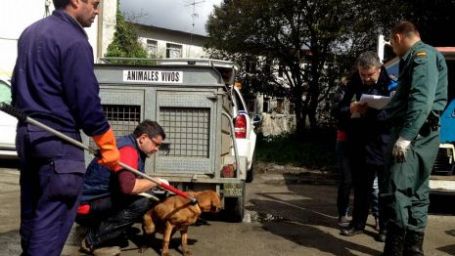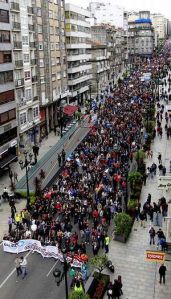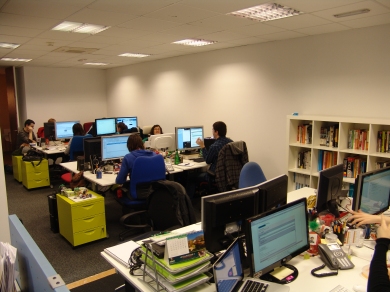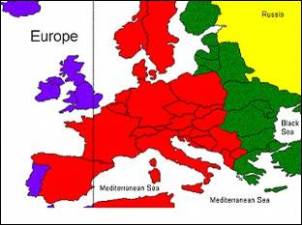-The autonomous community comes with more than 200,000 empty homes
-Almost 30% of households are uninhabited in the province of Lugo
-Rural tourism and cooperative movements try to combat the neglect
Galicia is the autonomous community leader in number of empty homes. The rapid demographic depression and the devastating effects of the agricultural crisis are some of the main factors that can explain the existence of more than 200,000 unoccupied homes within its borders. Neglect, basically mainly family homes, attached to the failed property developments conducted in different centers of population at the end of the last decade have ended up turning much of Galicia in a huge “shadow museum”
Nowadays, Galicia has more than 1300 cores deserted. Around the 50 % of the national total.The city council of Ortigueira, located in A Coruña, with a global total of 95 cores deserted, is in this section, the one who carries the palm.
In a similar line, As Somozas and Carballo, in the province of A Coruña, Sober, A Fonsagrada, Ancares and Samos, in Lugo, O Barco de Valdeorras Carballiño and Xinzo de Limia, in Ourense, or Agolada and Lalin, in Pontevedra, are some of the councils that have a greater number of “ghost towns” in its territory.
Taking into account its population density, the province of Lugo leads the national ranking of inhabited homes, with a total of 35.173 or, which is the same, 28,51% of the total of its propierties. Ourense, with 27,40%; A Coruña, with 25,40% and Pontevedra, with 23,49%, complete the list. It is made apparent by the last report published by the NIE, in the chapter which deals with the number of empty propierties that are fit for habition.
The rehabilitation of the environment and rural tourism:
Although the outlook in which are immersed the municipalities belonging to the Galician countryside is, nowadays, devastating, and job perspectives in this surrounding are even less promising, some public and private initiatives bet on their recovery
Jose Maria Galan, a 71 year old entrepreneur from La Rioja (autonomous community placed in the north of Spain) and co-fouder of “Couso Galán”, the only fully restores rural village in Galicia as a result of “ a risky personal commitment”, knows a lot about that.
“A friend of me who knew the area told me that there was an abandoned village close to Ourense, which did just have one neighbor in the last 15 or 20 years. We bought all the houses and the enjoining properties, and after a lot of work, we inaugurated “Couso Galan” in summer 2008”, he remembers.
Nowadays, the new village, which belongs to the municipality of Sarreaus, located in the river Limia, is a clear reference of rural tourism in the province and an important focal point for tourists. “In the first instance, I couldn’t expect the project to go any further. We’ve restored a total of 18 houses. We have 20 rooms available, a café, a restaurant and an events room for which we have 30 wedding bookings for this year”, said José María Galán, just before remembering that his has been, years ago “the most visited village in Europe.”
However, and despite the ecotourism already supposes an important source of income for the community and represents a firm commitment to stimulate the development of the rural environment in Galicia, the founder of the village did not hesitate to denounce the passivity of the institutions in promoting and disseminating initiatives like his. “I live here with my wife and my daughter and I am proud of what we have achieved, but it is a shame that after investing between 6 and 8 million on this project, we have not received financial or moral support from any institution at all this time”, he concluded.
Fortunately, “Couso Galán” is not the first nor the last village called to mitigate the impact caused by the rural area depopulation in Galicia. “Grupo de Acción local Río Lor” (Local Action Group Río Lor), germ of the current ‘Grupo de Desenvolvemento Rural Ribeira Sacra’ (GDR), managed to “resurrect” a total of five villages, considered since then Cultural Interest Properties in this region from Lugo in the period between 2002 and 2006. They were, however, other times, times in which the ‘GDRs’ regional entities born to manage the funds ‘LEADER,’ (financial support for the economic development in depressed regions) originally from the European Union, “they had the ability to encourage and promote rural development projects on their own initiative.” “A change happened on the planning of the aids, since 2008, limiting the granting of founds ‘LEADER’ to third people and entities interested in developing a project”, confessed from the breast of the ‘GDR Ribeira Sacral’.
The old recipe of cooperative movement
The development of the forest area, the optimization of the profits derived of the renewable energies, the overcoming of the proprietary smallholder structure – incapable of assimilate the business activity-; the promotion of the ecological production, or the foreign tourism, they outline already like some of the remedies that are able to combat the the rural exodus in Galicia.
Along with all of them, however, which has got to consolidate on the last years as the best alternative to take up the development of the rural area, is the old recipe of cooperativism. A recipe so old that is gone back to the very origins of life in society, of shared word and plain and simple collaboration between members of the same community.
Something that, like explains Xan Martinez, manager of the Cooperative of responsible consumption ‘A Xoaniña’, based in Ferrol, “it was lost in Galicia at an atrocious rate, catalyzed by a capitalist system that promotes only the individualism”.
The cooperative, called to strengthen the social and economic development in rural areas, seems today as one of the few tools capable of reversing the current economic subordination in which the farming industry finds itself in Galicia.
Not surprisingly, 2012 has been designated by the ONU as the “International Year of Cooperatives’. It was a significant year for rural Galician expectations, that huge “green desert”.
RESOURCE: http://www.elmundo.es/elmundo/2012/03/31/galicia/1333191137.html











